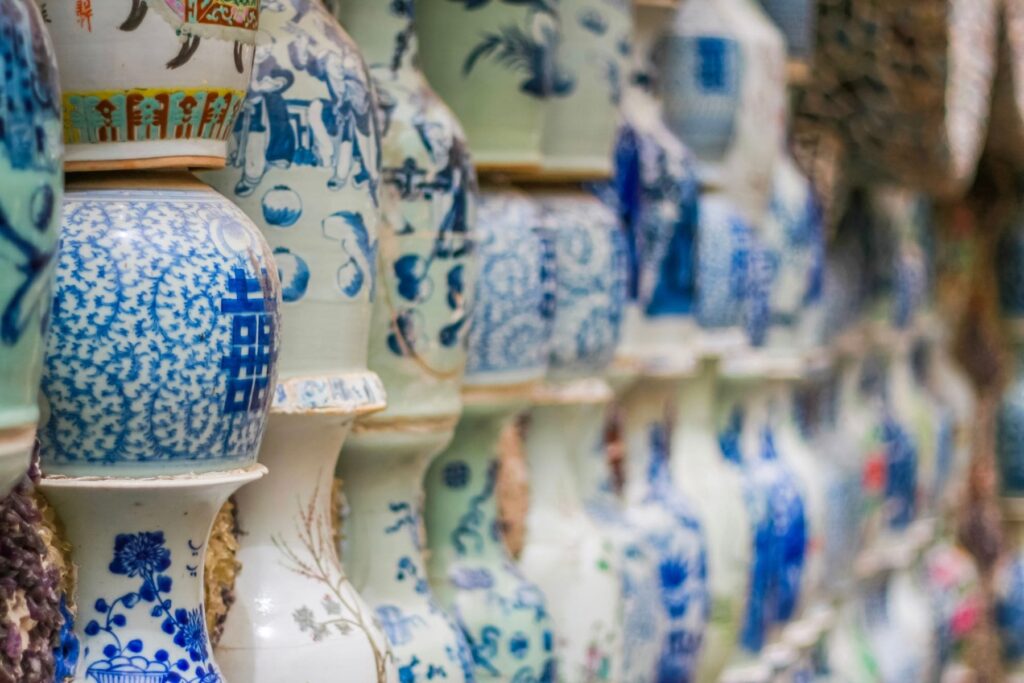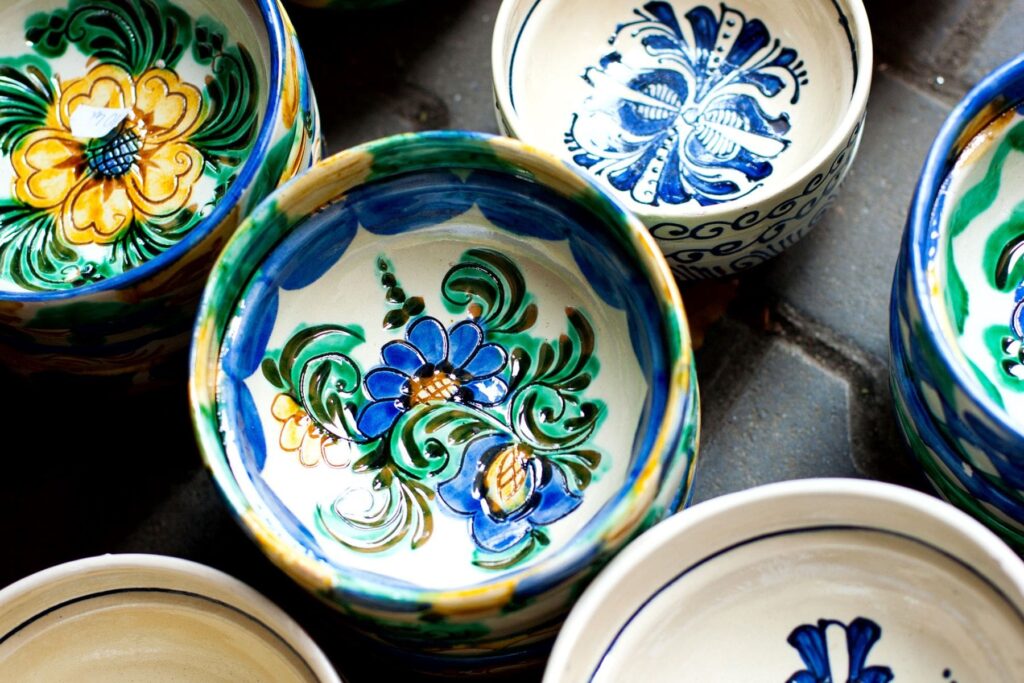Craft Your Masterpiece with Ceramics
If you’ve ever held a porcelain teacup and admired the delicate curves, the smooth glaze, and the way light dances off its surface, you’ve already experienced a small taste of Chinese ceramics. But behind that simple object lies a deep and fascinating story—a history that stretches back thousands of years, across dynasties, continents, and cultures.
Chinese ceramics aren’t just pots, plates, and vases. They’re windows into the soul of China’s artistic heritage. They reflect the evolution of technology, trade, culture, and aesthetics. And interestingly, while this art form has its roots in ancient Chinese kilns, it’s finding a whole new life today in places like New York City, where artists and students are embracing ceramics not just as craft, but as cultural conversation.
Let’s take a deep dive into the world of Chinese ceramics: where it began, how it evolved, and where it’s headed now.


The Ancient Origins of Chinese Ceramics
Ceramics in China date back over 10,000 years, making them one of the oldest continuous artistic traditions in the world. The earliest forms were utilitarian—simple earthenware vessels made for cooking, storage, and ritual use. But even in these early stages, Chinese pottery displayed a sense of balance, form, and beauty.
By the time of the Neolithic period (c. 5000–2000 BCE), regional cultures like Yangshao and Longshan were producing painted pottery with geometric designs. These were handcrafted without a potter’s wheel, fired at relatively low temperatures, and yet, they already demonstrated remarkable skill.
From Pottery to Porcelain: A Technological Marvel
One of China’s greatest contributions to the world of art and material science is porcelain. Often called “china” in the West—after its country of origin—porcelain is a type of high-fired ceramic made from kaolin clay. It’s known for its strength, whiteness, translucency, and glass-like finish.
Porcelain was developed around the Tang Dynasty (618–907 CE) but really reached its peak during the Song (960–1279) and Yuan (1271–1368) Dynasties. These periods saw the emergence of the famous imperial kilns and glaze innovations that still influence ceramic artists today.
Different regions became known for different styles:
Jingdezhen, in Jiangxi Province, became the porcelain capital of China.
Yaozhou kilns were famous for celadon ware.
Cizhou kilns produced everyday wares with painted decoration.
Ding ware and Ru ware were prized for their refined glazes and minimalist elegance.
By the Ming (1368–1644) and Qing (1644–1912) Dynasties, porcelain had become a global commodity. Blue-and-white porcelain, in particular, became a major export to Europe, the Middle East, and beyond, symbolizing not just wealth, but refinement and taste.
Styles and Techniques: More Than Just Clay
Chinese ceramic art includes a wide range of forms and techniques. Here are some key elements that make Chinese ceramics distinctive:
Glazing Techniques
- Celadon: A translucent green glaze inspired by jade, symbolic of purity and nobility.
- Blue and White: Cobalt-painted designs under a clear glaze—iconic in Ming porcelain.
- Jun and Ru glazes: Known for their subtle color shifts, often with a “flashing” effect.
- Famille Rose and Famille Verte: Multicolored enamel decoration, popular in the Qing Dynasty.
Decorative Motifs
- Motifs on Chinese ceramics often have symbolic meanings:
- Dragons represent power and protection.
- Lotus flowers signify purity.
- Peonies suggest wealth and beauty.
- Fish symbolize abundance.
- Clouds, waves, and mountains express harmony with nature.
- Forms
Chinese ceramics span a wide variety of forms—from teapots, incense burners, and wine jars to elegant vases like the meiping and gu. Some were used in daily life, others for spiritual rituals, and many as decorative art.
Ceramics as Cultural Currency
It’s hard to overstate the cultural impact of Chinese ceramics throughout history. During the Silk Road and later maritime trade routes, Chinese porcelain became one of the most sought-after commodities. European aristocrats collected Chinese vases and dinnerware as symbols of sophistication.
In fact, European attempts to replicate Chinese porcelain led to the development of their own ceramic industries, such as Meissen in Germany and Sèvres in France. Still, authentic Chinese pieces remained unmatched in quality and allure.
Even within China, ceramics were more than objects—they were gifts of diplomacy, ritual tools, and even status symbols. Owning or gifting a fine porcelain item was a statement of culture and intellect.
The Philosophical and Artistic Dimension
What sets Chinese ceramics apart from mere craft is their philosophical depth. Influenced by Daoism, Confucianism, and Buddhism, ceramic art in China often reflects natural simplicity and spiritual balance.
The Daoist ideal of ziran (自然) or “naturalness” shows up in asymmetrical forms and subtle glaze effects. The Confucian value of refinement is expressed in technical mastery. Buddhist thought, especially Zen, aligns with the quiet austerity of many Song Dynasty wares.
In this way, Chinese ceramics are not just about beauty—they’re about attunement to the world, an extension of the artist’s inner spirit.
Modern Chinese Ceramics: A Living Tradition
Ceramic art didn’t vanish with the fall of dynasties—it evolved. In the 20th century, artists began pushing boundaries, blending tradition with contemporary aesthetics.
Some, like Wu Guanzhong, brought a painterly eye to ceramic surfaces. Others used traditional forms in avant-garde installations. Jingdezhen, once home to imperial kilns, remains a creative hub today, attracting artists from all over China and the world.
There’s also a growing effort to preserve folk ceramics, such as Yixing teapots and Han-style pottery, which embody regional identities and techniques.
In contemporary China, ceramicists balance between innovation and heritage, turning clay into both functional ware and conceptual art.
Chinese Ceramics in New York City: A Modern Renaissance
Now let’s fast forward—thousands of miles from the kilns of Jingdezhen to the creative neighborhoods of New York City. Surprisingly (or perhaps not), Chinese ceramics are finding a new home in the heart of the Western art world.
Why NYC?
New York City has always been a melting pot of ideas, cultures, and art forms. Its global reach, dynamic art scene, and appreciation for craftsmanship make it a perfect environment for ceramic artists—especially those inspired by Chinese traditions.
In recent years, more and more ceramic studios and workshops in New York are embracing Chinese techniques, materials, and philosophies.
Workshops and Studios: Where Ancient Meets Modern
A New Generation of Makers
Many of today’s ceramicists in NYC are either directly from China or deeply influenced by Chinese ceramics. They’re bringing back traditional techniques like hand-coiling, brush-glazing, and wood-firing, but reinterpreting them with a modern twist.
Whether it’s minimalist celadon bowls or sculptural pieces glazed in vibrant Qing-inspired colors, these artists are continuing a dialogue that began thousands of years ago.
Where to Learn or Experience Chinese Ceramics in NYC
There are several places in the city where you can learn, observe, or even try your hand at making Chinese-inspired ceramics:
- Choplet Ceramic Studio (Williamsburg): Offers classes and open studios, sometimes hosting Chinese ceramic artists.
- Greenwich House Pottery (Manhattan): A historic pottery school with workshops that occasionally explore East Asian techniques.
- The China Institute (Lower Manhattan): Offers lectures, exhibitions, and cultural classes that include traditional crafts like ceramics.
- The Met Cloisters and The Met Fifth Avenue: While not a studio, their Asian Art collection showcases some of the finest Chinese porcelain in the world.
More Than Just Art: Community, Culture, and Connection
What’s beautiful about the ceramics scene in New York is that it’s not just about production—it’s about community. Ceramics classes often become cultural exchanges. Students learn about glaze chemistry alongside stories of Chinese dynasties. They understand how a crackle-glaze teabowl isn’t just pretty—it carries a history of tea culture, meditation, and poetic aesthetics.
For Chinese-American artists and immigrants, ceramics becomes a bridge between past and present, East and West, heritage and innovation.
The Future of Chinese Ceramics—Global and Grounded
As global interest in handmade, slow-crafted goods grows, Chinese ceramics are uniquely positioned to thrive. Their mix of beauty, utility, and cultural meaning resonates across generations and geographies.
And thanks to the thriving ceramics scene in cities like New York, what was once a hidden or exclusive art form is becoming more accessible, experimental, and inclusive than ever before.
Whether you’re an artist, a collector, or simply someone who enjoys a well-crafted bowl, there’s something special about connecting to a tradition that’s still alive—changing shape with every turn of the wheel and every brush of glaze.
Final Thoughts: From Kiln to Table, From Past to Present
Chinese ceramics tell a story. Not just of clay, glaze, and fire—but of humanity’s quest for beauty, connection, and meaning. From ancient tombs to modern galleries, from imperial workshops to Brooklyn studios, the journey continues.
So the next time you sip from a porcelain cup or walk into a local ceramics workshop, remember: you’re not just looking at a piece of art. You’re witnessing the living legacy of one of the world’s most enduring creative traditions—shaped by hands, fired by flame, and full of stories.